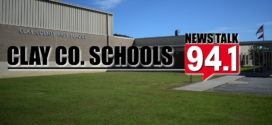Pediatricians at Cookeville Regional Medical Center warn parents of potential choking hazards in their childrens’ Christmas gifts this holiday season.
Director of Pediatrics Dr. Apryl Hall says many small objects pose a risk to infants and small children.
“The most important thing is small toys are choking hazards, so nothing small enough that the child can put in their mouth so that they don’t have to worry about them getting choked,” Hall says. “Also, those small parts that come apart like LEGO sets, etc, especially if they’re sharp. You have to worry about those.”
Hall says the biggest threats to infants and small children – beyond becoming a choking hazard – are batteries.
“Especially a lot of those button batteries we put in electronics these days, those children can swallow them just like they would a coin,” Hall says. “But the difference between a button battery and a coin is it takes no time at all for it to burn through the esophagus or the stomach of a child. So it’s an emergency if they were to swallow one.”
Hall says the number of toy-related incidents treated by pediatricians have slightly decreased with more emphasis being placed on technology when it comes to children’s entertainment. However, pediatricians still see their fair share of cases each year.
“There are still a number of accidents because small children, infants, and toddlers get a hold of toys that are meant for older children,” Hall says. “So you still have to be careful especially if you have multiple children in the home, because the older children just don’t think about their toy hurting their sibling.”
Hall says keeping choking hazards away from small children is a year-round issue and goes beyond the child’s toys.
“There are other things they eat this time of year like popcorn and hard candy,” Hall says. “All of these things that are small, you have to be super careful with in that age group because they can very easily put one or more in their mouth and choke.”
Hall says some of the more common issues treated by CRMC pediatricians involving children have to do with foreign objects.
“We see a lot of people bring their children in for shoving things up their nose,” Hall says. “We see ingestion, swallowing the toy, and they get stuck because the airway and the esophagus are very close together and narrow. They can get part of the way down and not make it all of the way down, and can really obstruct their airways.”
In the case a child does swallow a small object, Hall advises parents to not use their hands to retrieve the object as doing so may push the object further down. Hall recommends the Heimlich maneuver to help dislodge the item.
 News Talk 94.1/AM 1600 Where The Upper Cumberland Talks
News Talk 94.1/AM 1600 Where The Upper Cumberland Talks







